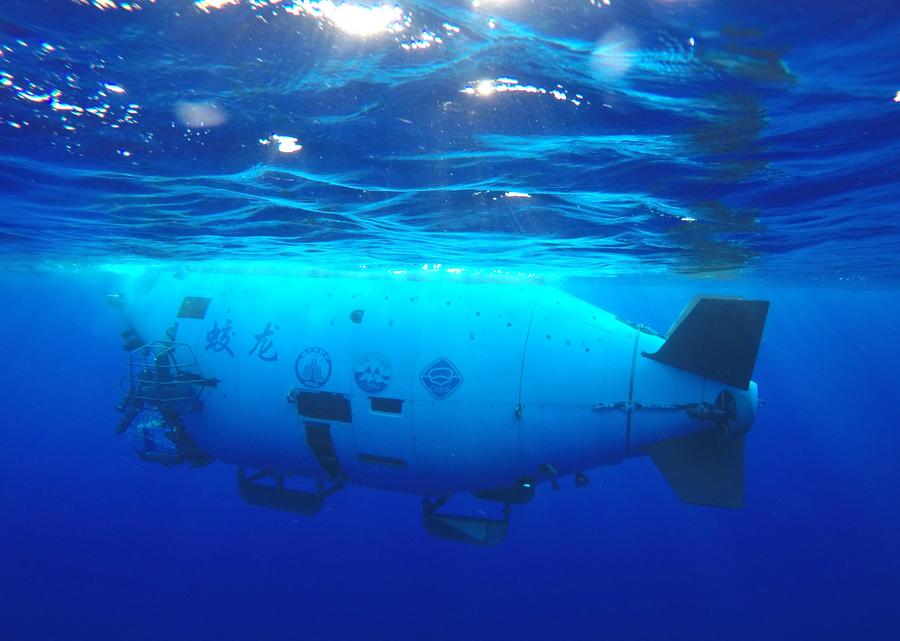Published: February 24,2024

As the Chinese people were exchanging their wishes for a prosperous Year of the Loong, an array of machines bearing the name of this zodiac animal were also capturing public attention due to their exceptional performances and encouraging prospects.
The loong, also known as the Chinese dragon, epitomizes resilience, dynamism, and vitality within Chinese culture. People in China commonly refer to this mythical creature as “long,” phonetically transcribing the corresponding Chinese character.
Some spacecraft, aircraft, and watercraft that include references to “long” have been under the spotlight since the lunar new year. People hold high hopes for them to embark on even more remarkable endeavors and continue to achieve greater feats in the new year.
JIELONG
SpaceX’s Dragon craft often features in the headlines, while China’s commercial rocket named Smart Dragon, or “Jielong” in Chinese pinyin, has also garnered significant media coverage this month.
A Smart Dragon-3 (SD-3) solid-propellant rocket blasted off from a launch service ship off the coast of Yangjiang in Guangdong Province on Feb. 3, sending nine satellites into space. The bright rocket flame soaring from the sea attracted thousands of spectators to the onshore viewing site.
This successful liftoff was the latest flight mission of the SD-3, a member of China’s Dragon rocket family. Unlike the Long March rockets, the country’s backbone launch vehicles, the Dragon series has been developed specifically to meet the growing market demand for launching low-orbit small commercial satellites and satellite networks.
Developed by the China Academy of Launch Vehicle Technology, the four-stage SD-3 recorded its maiden flight in December 2022 from a ship in the Yellow Sea.
“The SD-3 has filled many blanks in China’s space industry,” said Guan Hongren, chief designer of the rocket, who highlighted its ability to send a payload of 1.5 tonnes to sun-synchronous orbit at an altitude of 500 km. This carrying capacity is more than seven times that of the first-generation Dragon rocket SD-1.
At least four more SD-3 rockets will be launched in 2024. To increase its competitiveness in the booming commercial space industry, China is planning the development of an SD-4 rocket with greater carrying capacity. The near future will witness the emergence of a larger and more energetic “dragon” soaring through the skies.
KUNLONG
The sky has already been graced by the flight of two “water dragons.”
Two prototypes of the China-made seaplane AG600M, codenamed “Kunlong,” recently completed test flights in an extremely cold environment.
Video footage posted on Chinese news portals showed these aircraft taking off from a snow-covered airport in north China’s Inner Mongolia Autonomous Region. According to the Aviation Industry Corp of China, the aircraft’s manufacturer, the two-week-long test validated the aircraft’s capability and performance in extreme freezing temperatures, ranging from -20 degrees Celsius to -40 degrees Celsius.

“Kun” refers to a giant fish in Chinese mythology. Kunlong is a versatile aircraft that can take off and land on both water and the ground.
The AG600M, a member of China’s AG600 family of amphibious aircraft, is designed for aerial firefighting operations. It boasts a maximum take-off weight of 60 tonnes and can carry up to 12 tonnes of water, allowing it to cover a flight range of up to 4,500 km. Additionally, its ability to perform low-altitude flying at low speeds enables precise water drops on fire sites.
The AG600M prototype completed its first test landing on land in May 2022 and landed on water for the first time in August that same year.
The aircraft manufacturer aims to obtain the type certificate for the AG600M by the end of 2024. Since the seaplane model has already secured purchase orders, its market entry is on the horizon.
JIAOLONG
The Chinese dragon not only possesses the ability to go up to the sky but also down to the depths of the ocean.
“Jiaolong” is a mythical sea dragon, but it also refers to a Chinese manned submersible that is capable of diving to depths exceeding 7,000 meters. It was named after the mythical creature because of its deep-sea exploration capability.

Jiaolong set a record by diving to a depth of 7,062 meters during tests in the Mariana Trench in 2012. Although this record was later broken by the Fendouzhe submersible, Jiaolong has accomplished numerous tasks and established remarkable achievements since setting that now former record.
This year, Jiaolong embarked on a new mission. The submersible, carried aboard China’s research vessel “Deep Sea No. 1,” has reached the South Atlantic Ocean and is being used during what is China’s 83rd ocean expedition in that region. It is anticipated that Jiaolong will undertake a total of 46 dives in the course of the expedition.
 Africa -China Review Africa -China Cooperation and Transformation
Africa -China Review Africa -China Cooperation and Transformation
